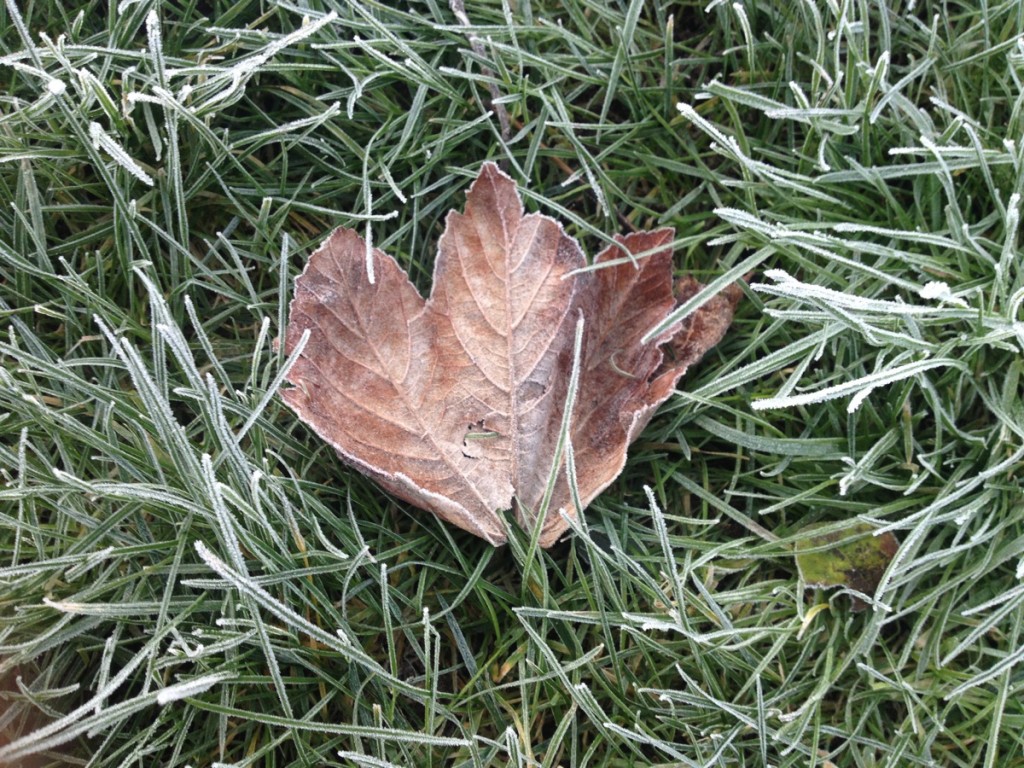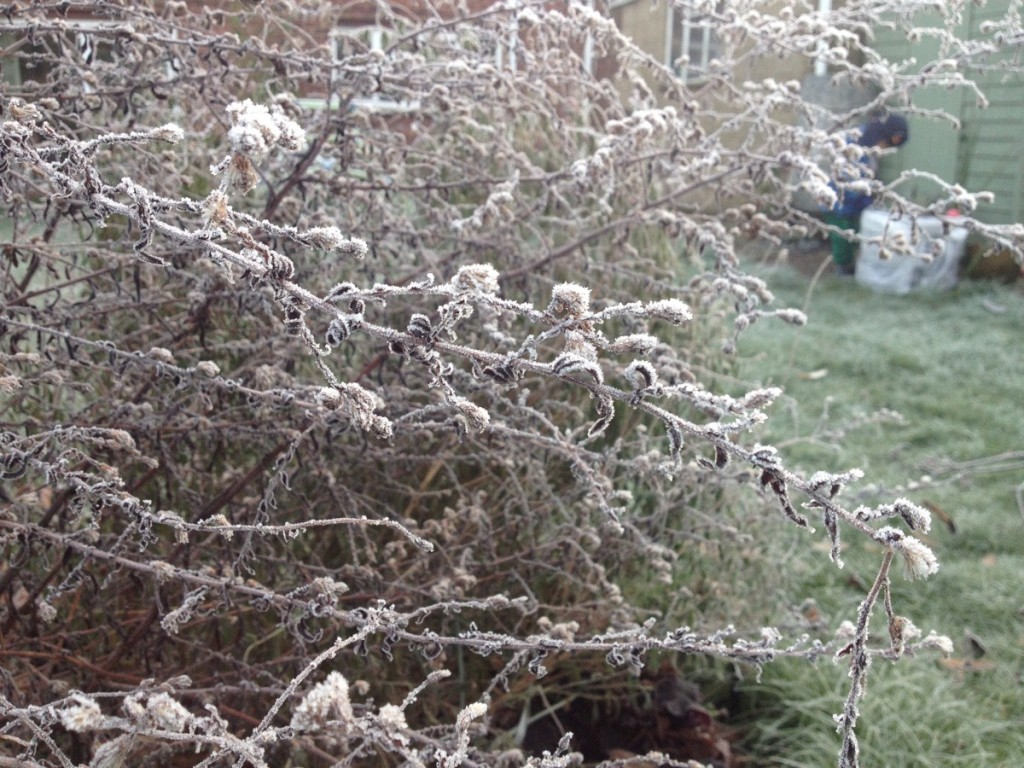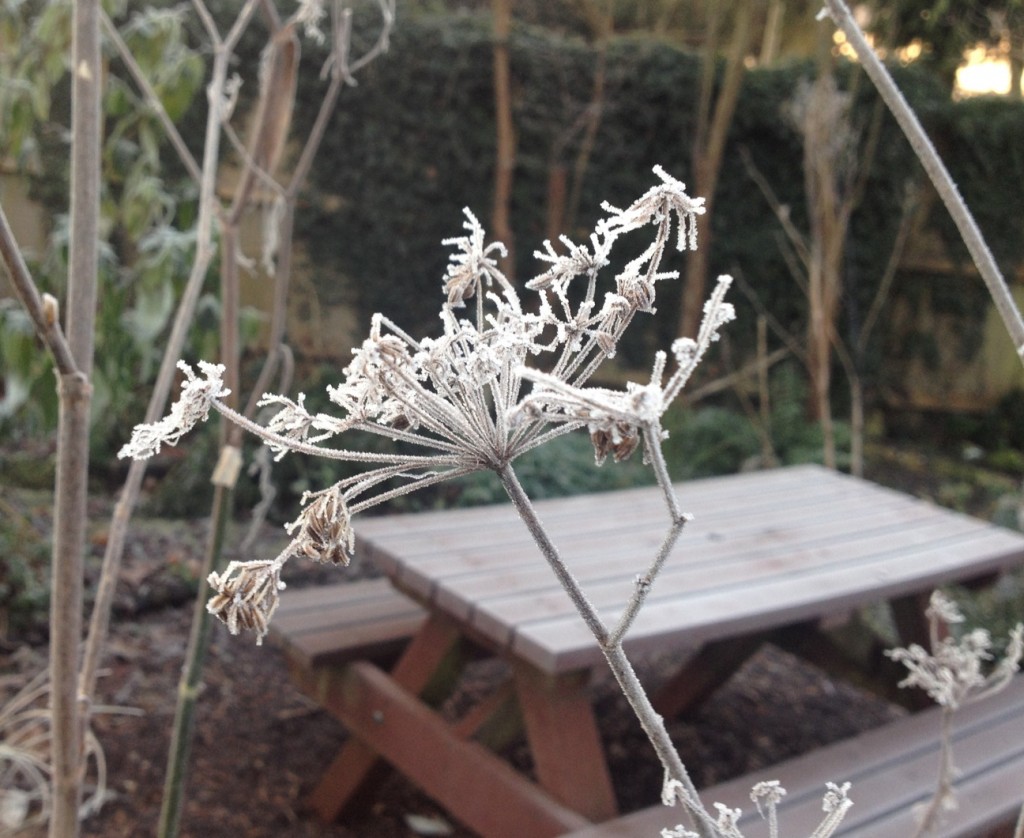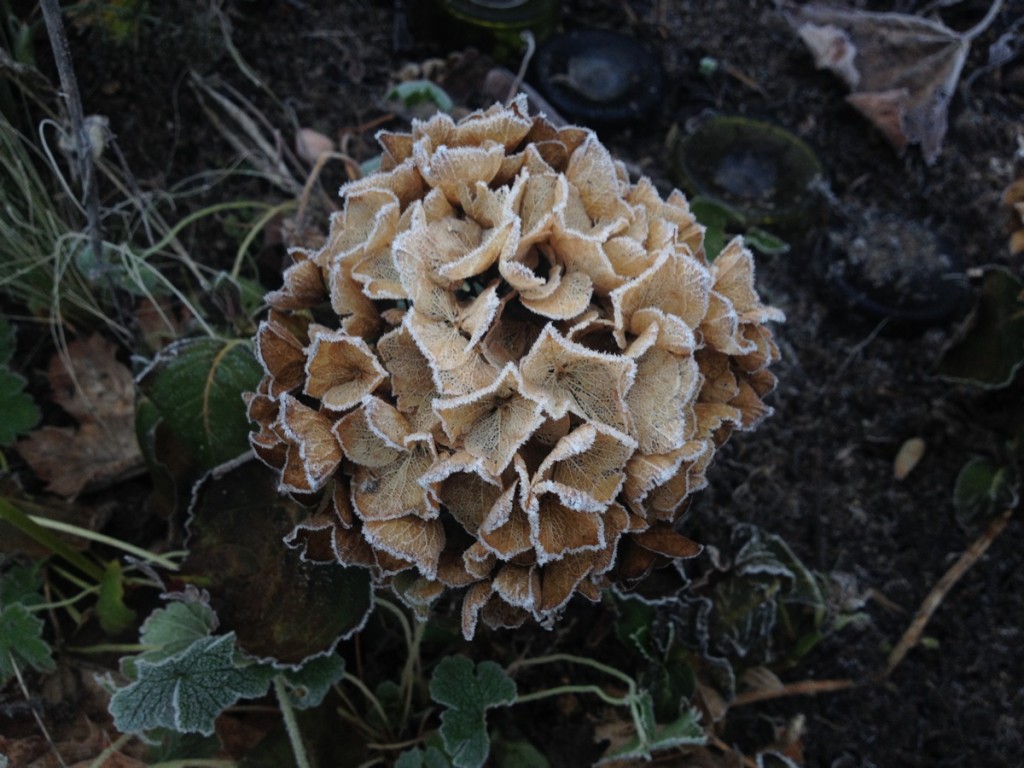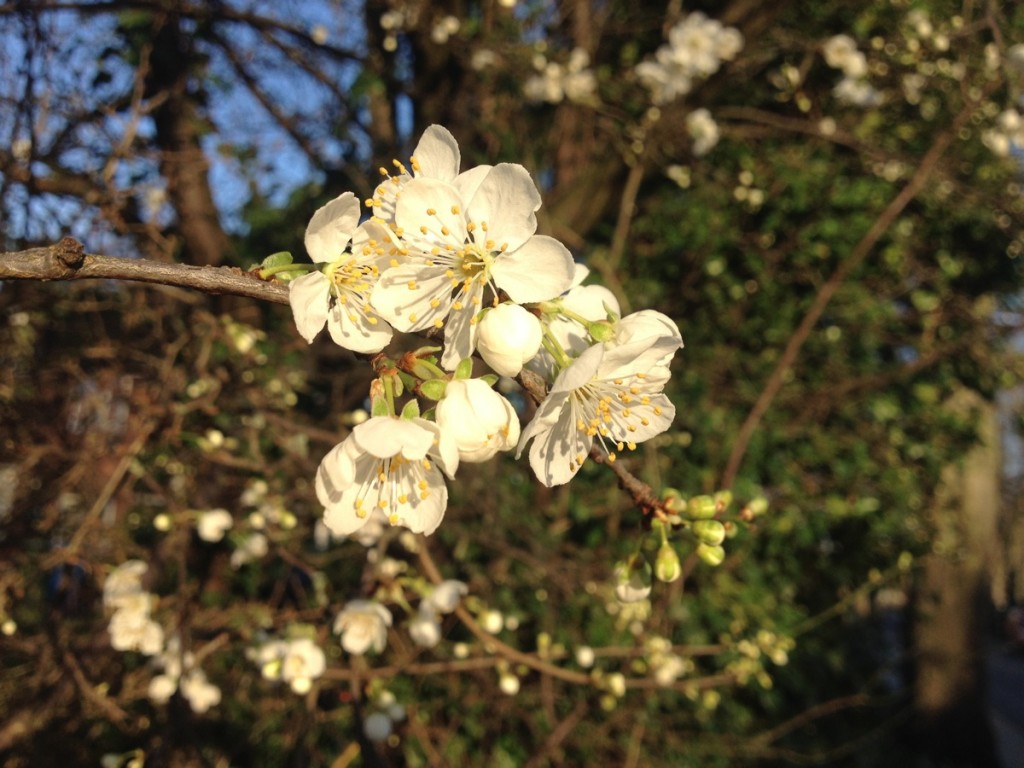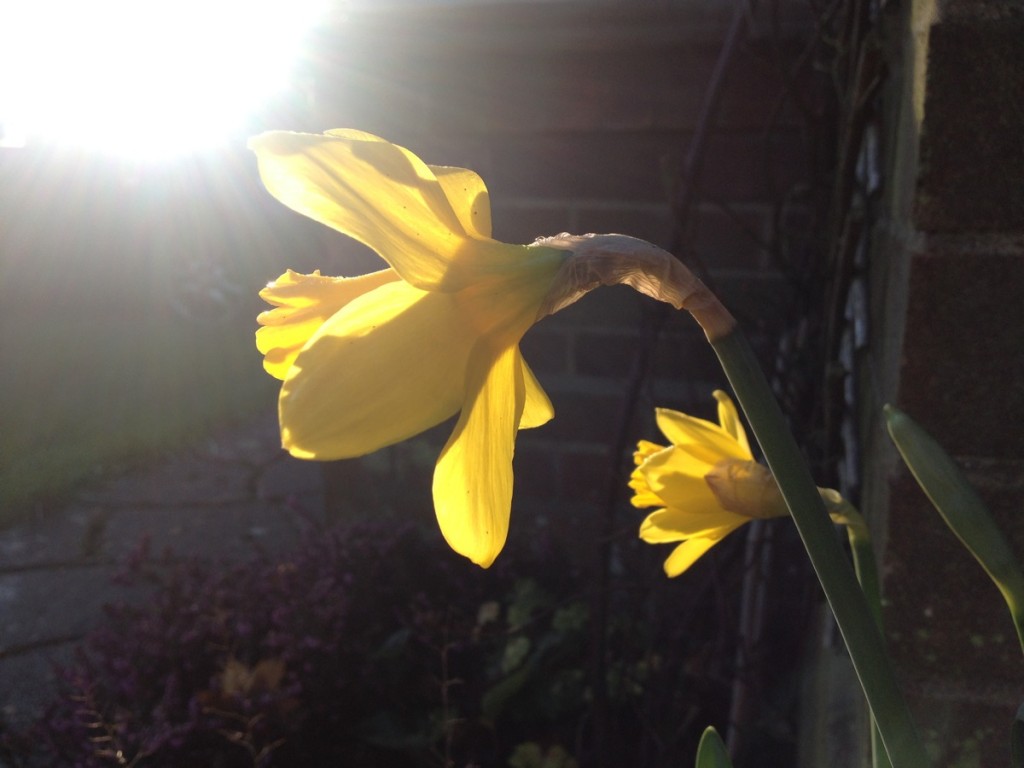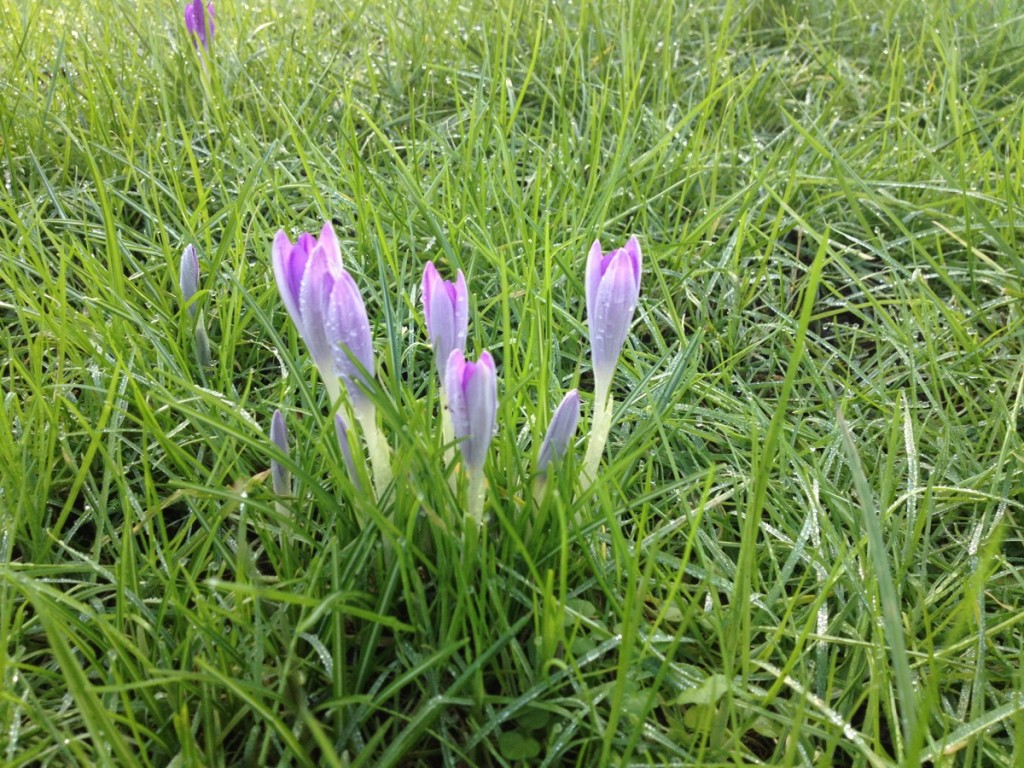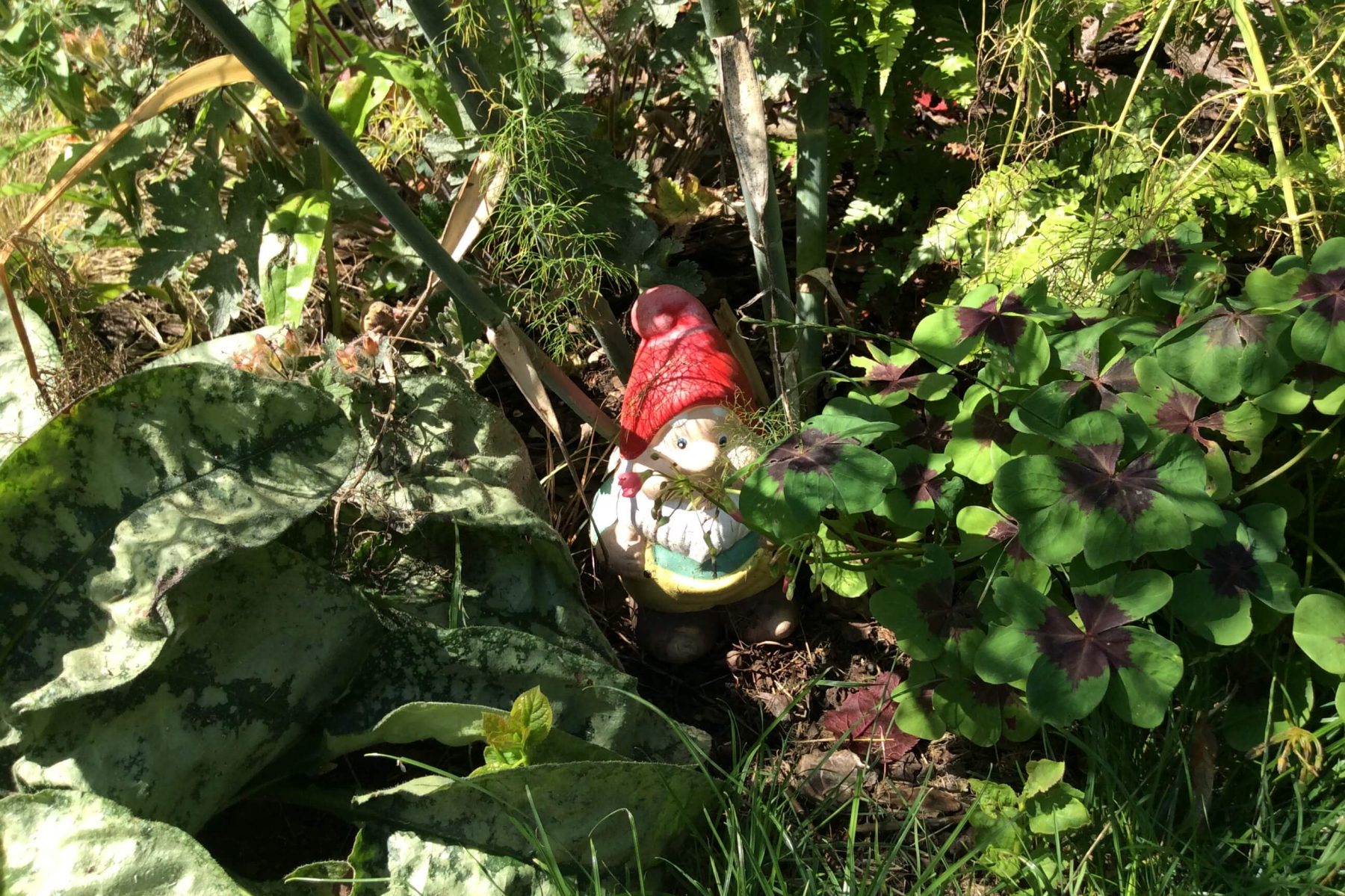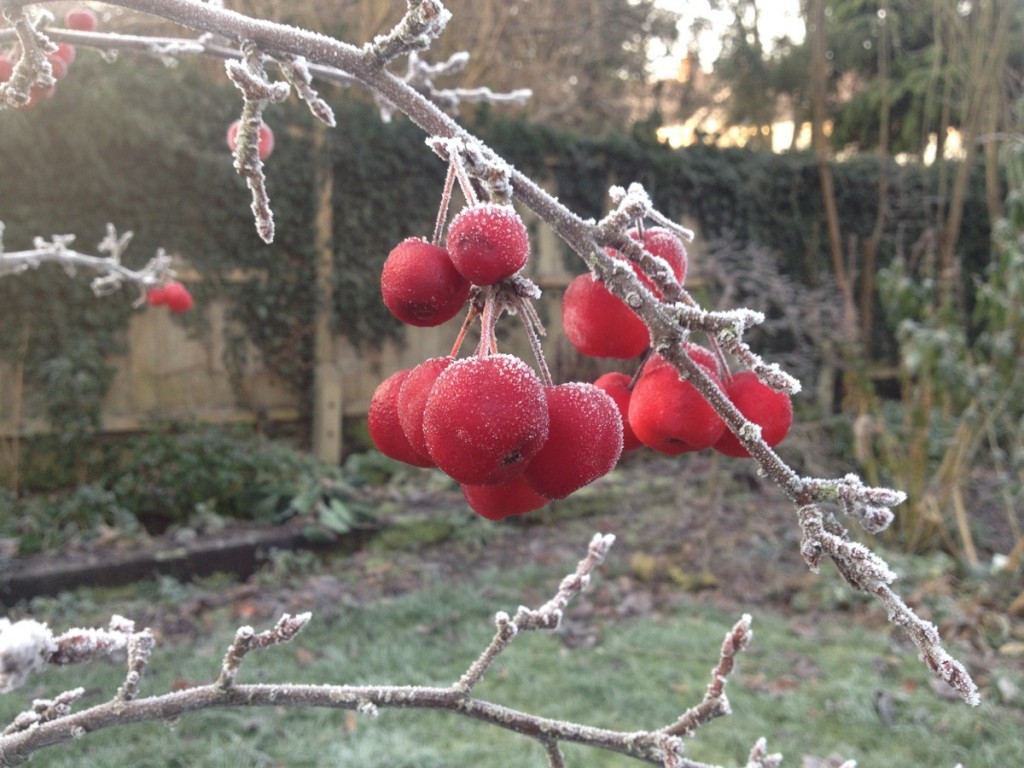
Winter landed here in a big way last week and we woke up to some stunningly beautiful frosts, the ground sparkly white, and plants and trees coated in a thick dusting of frosty crystals. I couldn’t resist wasting five vital minutes of school run time taking photos! It’s milder this week, the sun is out and we’ve got our blue, blue Norfolk skies back. Sunsets and sunrises have been the most glorious shades of red and pink lately. Once again, I’m feeling incredibly lucky to be living here.
I advocate a sedate, indoor lifestyle in January, and have mostly been crocheting blankets or reading in front of the fire. But there are a few things you can be doing in the garden if you have the inclination.
Keep an eye on ponds
To stop ponds freezing over completely, float an old tennis ball on the surface. If the temperature drops below freezing, check that there remains an air hole in the ice. Fish and other wildlife need sufficient oxygen in the water to survive, and levels may get too low if the pond is frozen over for too long. If the ice is too thick, don’t break it by smashing a hole in it, as you will give your water creatures a dangerous shock! Rather pour some hot water onto the surface until you have melted a hole through it. You can also insulate tub ponds by wrapping the sides in a couple of layers of bubblewrap or horticultural fleece.
Break some rules
If, like me, you still have some spring bulbs that you failed to plant last year, don’t chuck them out. It’s not too late to plant them. Throw away any mouldy ones and then plant the others as soon as the ground is soft enough to get a trowel into. Or, if the ground is still too hard, plant them in a pot, in layers, to create a bulb lasagne. Do this by planting the largest bulbs, such as tulips, deepest, and cover them lightly with some compost. Then create another layer with smaller bulbs, maybe some early daffodils, and again cover with a little compost. Your last layer will be the smallest bulbs, such as early alliums or crocuses. Cover with compost, water lightly, put the pot in a corner and wait. You can then move the pot somewhere prominent when the stems start budding up. These January planted bulbs will still flower, only later than usual.
Look after the birds
Check nest boxes are clean and secure, or put up new ones. The RSPB has a helpful guide if you’d like more information about making or siting nest boxes in your garden. A pair of blue tits are already flitting in and out of a box in my garden, so it’s definitely not too early to get this job done. Keep bird feeders topped up and put water out, especially if it’s freezing, as it can be hard for birds to find water in cold weather. If you have any fruit that’s gone over, wrinkly plums or brown bananas, put those out in the garden for the blackbirds and jays instead of composting them. And get ready for the RSPB’s Big Garden Birdwatch this weekend by reading my last post.
Pick a new plant to grow in 2016
Every year, I like to grow something new in the garden. A couple of years ago, I went for alliums in a big way. Last year, I grew lilies for the first time. It’s a great way to overcome the daunting feeling that a particular plant might be too tricky or difficult, if you just say to yourself, “I’ll have a go and see what happens”. I tend to use the Gardener’s World magazine special offers for this, because it means I don’t have to invest very much money in my initial experiment. In 2016, I will be growing dahlias for the first time. Watch this space and I’ll let you know how it goes.
I hope the world near you is looking lovely at the moment. I find if you slow down and take a moment to look closely at what’s growing around you, you’ll soon see something beautiful that gladdens the heart. I’ve seen crocuses in flower and even some early blossom on my way back from school this morning. It looks like it’s going to be an early spring. At least, that’s what the plants are saying. Let’s hope the weather agrees with them.
